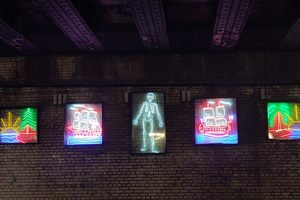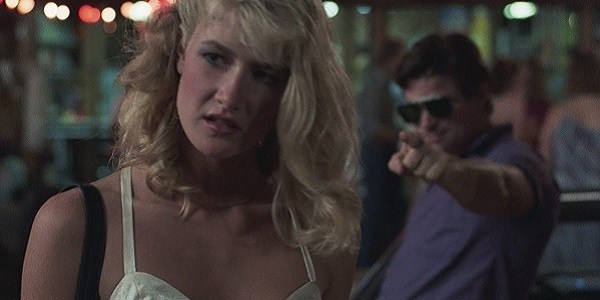‘A Drama in Time’ in Edinburgh, Scotland

Commissioned as part of the 2016 Edinburgh Art Festival, “A Drama in Time” is a set of five neon artworks by Scottish artist Graham Fagen. They depict two seascapes, two sailboats, and a skeleton in the middle. Its title comes from a quote by Patrick Geddes, a city planner noted for his improvements to the living conditions of Edinburgh’s then-infamously crowded and unsanitary Old Town. According to Geddes: “A city is more than a place in space, it is a drama in time.”
Located near the Calton Road (downhill) terminus of the well-known Jacob’s Ladder, the artwork draws meaning from the Ladder itself, which can be seen as a connection between the Old and New Towns. Additionally, it leads to the many monuments atop Calton Hill, which also offer views of the Firth of Forth, Edinburgh’s gateway to the sea.
One of the most notable monuments of Calton Hill is dedicated to Robert Burns, considered Scotland’s national poet. Active during the late 18th-century, Burns once intended to emigrate to Jamaica and oversee a plantation worked by slaves. His boat was set to depart from Edinburgh’s port of Leith, but his precarious financial situation kept him from following through. Instead, he stayed in Scotland and eventually gained stronger abolitionist views, which lead to his poem “The Slave’s Lament”.
While neither Fagen nor the Edinburgh Art Festival state that “A Drama in Time” is directly related to the African slave trade by European powers, Fagen has addressed Burns’s “Lament” in other works. Considering the imagery of European Age of Discovery-style boats alongside sunny beach scenery and a representation of death, it’s likely that the work is meant to relate to the heavy legacy of major European cities such as Edinburgh itself, and perhaps, slavery.





